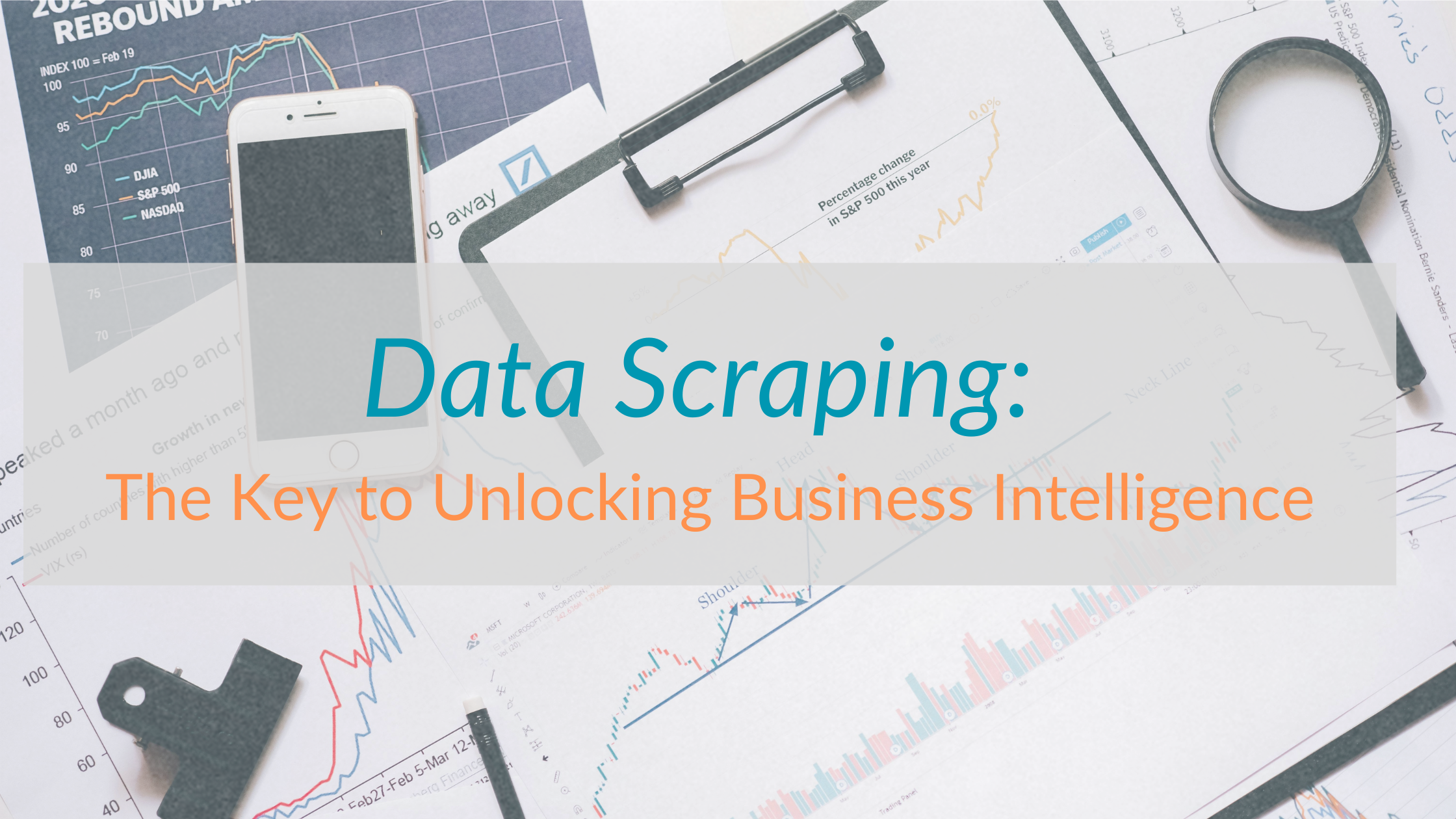This data is often converted into a structured format such as a spreadsheet or database, making it easier to analyze and utilize using various tools.
While traditional data gathering involves manual effort, data scraping automates this process. It leverages algorithms to efficiently collect information from multiple online sources.
So how can you leverage data scraping to promote business intelligence?
How to Carry Out Data Scraping
Data scraping can be performed using various tools and programming languages. These include:
- Python
- R
- Specialized software e.g.
These tools simulate human browsing to capture data from websites, making it possible to gather vast amounts of information swiftly and accurately.
Benefits of Data Scraping
When done right, web scraping provides many benefits to organizations. For instance, it supports informed decision-making. It provides businesses with valuable insights by aggregating data from various sources. This information can be used to make data-driven decisions, identify market trends, and understand consumer behavior.
Web scraping also drives competitive analysis by collecting data on competitors. Businesses can benchmark their performance, understand competitor strategies, and identify opportunities for differentiation.
Data scraping is an essential component when carrying out market research. It helps organizations gather comprehensive data about their market by collecting information on industry trends, customer preferences, and emerging markets. This allows businesses to stay ahead of the curve and tailor their growth strategies accordingly.
When it comes to lead generation, businesses can generate leads and expand their customer base by scraping data from directories, social media, and professional networks. This can significantly enhance their marketing efforts and boost sales conversions.
Businesses looking to stay competitive need to develop the right pricing strategy. E-commerce platforms can use data scraping to monitor competitor prices and adjust their pricing strategies in real time. This ensures competitiveness, effectiveness, and maximizes profitability.
Data scraping also promotes content aggregation. For businesses that rely on content, such as news outlets and blogs, data scraping can automate the collection of relevant articles, news, and user-generated content, ensuring that the latest information is always available. This can help save time and costs that would otherwise have been spent manually carrying out these tasks.

Who Needs Scrapped Data?
Data scraping is utilized by a diverse range of industries and professionals, each leveraging it for unique applications:
- E-commerce: Online retailers use data scraping to monitor competitor prices, track product availability, and analyze customer reviews to optimize their offerings and pricing strategies.
- Marketing Agencies: Marketing professionals scrape data to identify target audiences, track campaign performance, and gather insights on consumer sentiment across social media and other platforms.
- Finance and Investment Firms: Financial analysts and investors scrape data from financial reports, news articles, and market data to inform investment strategies and identify market trends.
- Travel and Hospitality: Travel agencies and hospitality businesses scrape data from booking websites and review platforms to adjust pricing, manage inventory, and enhance customer experiences.
- Real Estate: Real estate professionals scrape property listings, market trends, and demographic data to provide clients with accurate market assessments and investment opportunities.
- Academic and Research Institutions: Researchers use data scraping to collect large datasets from various online sources, enabling comprehensive studies and analysis.
The Cost of Web Scraping
The cost of data scraping can vary significantly based on several factors. These include the complexity of the project, the volume of data, and the tools or services used.
Here are some cost considerations:
In-House Development
Developing a custom data scraping solution in-house can be cost-effective for businesses with technical expertise. However, this approach requires investment in skilled personnel, software, and maintenance.
The initial development cost can range from a few thousand dollars to over $50,000, depending on the project’s complexity.
Outsourcing
Businesses can also choose to outsource data scraping to specialized firms or freelancers. The cost for outsourcing can range from $500 to $5,000 per project, depending on the scope and complexity.
Subscription-based data scraping services offer another alternative, typically charging a monthly fee ranging from $50 to several thousand dollars, based on the data volume and frequency.
Cloud-Based Solutions
There are cloud-based data scraping tools that offer scalable solutions. These services typically charge based on the number of web pages scraped or the volume of data processed, with prices ranging from $30 to $300 per month for small to medium-sized projects.
Enterprise-level solutions can cost significantly more.

How Long Does Web Scraping Take?
The time required for data scraping depends on several factors:
- Project Complexity: Simple projects involving a single website or a small amount of data can be completed in a few hours or days. Complex projects requiring data from multiple sources, dealing with dynamic content, or needing extensive data cleaning and processing can take weeks or even months.
- Data Volume: The larger the volume of data, the longer it will take to scrape, process, and analyze. High-frequency scraping, where data is collected regularly over an extended period, will also extend the timeline.
- Technical Constraints: The structure of the target websites can impact the scraping process. Websites with complex layouts, anti-scraping mechanisms, or frequent changes require more sophisticated approaches and additional time.
- Tool Efficiency: The choice of tools and technologies plays a crucial role. Advanced tools with higher processing power can significantly reduce the time required for data scraping.
- Data Processing: Post-scraping processes such as data cleaning, transformation, and storage also affect the overall timeline. Clean and structured data ensures better analysis and usability, which might add to the time required.
The Power of Data Scraping
Data scraping is a powerful technique that can provide businesses with critical insights and a competitive edge.
By understanding the benefits, costs, and time involved, business executives can make informed decisions about integrating data scraping into their strategic toolkit.
Whether for market research, competitive analysis, or lead generation, the ability to efficiently gather and analyze vast amounts of data can transform business operations and drive success in the digital age.
Read also:

